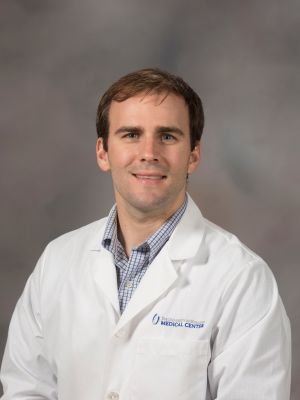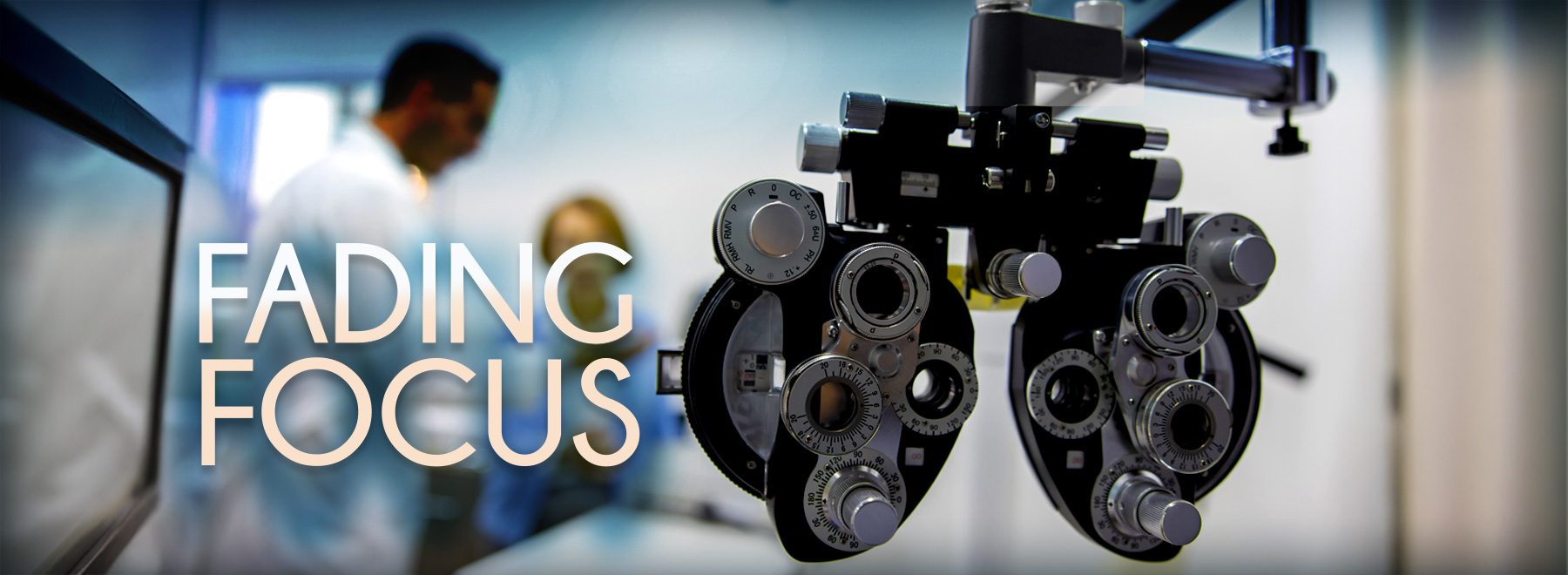Aging is a risk factor for these major eye conditions
As you grow older, the words on your computer screen, smart phone, book you’re reading or a restaurant menu may look like they’re melting. Don’t panic.

Presbyopia – the loss of near vision – could be the least of your worries. It’s a just part of aging, said Dr. Bo Huang, professor of ophthalmology at the University of Mississippi Medical Center.
“People who are over 45 suddenly find that they need reading glasses.”
But other changes can be causes for concern, particularly symptoms of the four major eye conditions most likely to lay siege to older eyes: cataracts, glaucoma, age-related macular degeneration and diabetic retinopathy.

“They may not have symptoms until they are too far gone to have easy solutions,” said Dr. Jay Craddock, UMMC associate professor of ophthalmology. “So, as you age it becomes even more important to have routine eye exams.
“All except cataracts – in general – can cause permanent vision loss and, in some cases legal blindness, or worse, if left undiagnosed and/or untreated.”
— — —
Cataracts
Of the four major age-related eye problems, cataracts is the most common, said Huang, who is also director of Cornea Services at UMMC. “It is the leading cause of correctable blindness in the world.
“It’s a clouding of the eye’s lens, which is important for bringing objects into focus. People have blurry vision; they can’t drive at night.”
About 18 million people have cataracts, estimated the World Health Organization in 2004.
“The eye’s lens begins to change color, becoming more yellow-brown (brunescent) and less clear, making it difficult for light to penetrate through it,” Craddock said.
“Most people have cataract changes discernable on an eye exam starting in their 50s, but often they are not visually significant until their mid-60s or 70s.”
After aging, UV light exposure is the most prevalent risk factor, Huang said. “So, wear sunglasses.
“Other risk factors are lack of health care access; certain medications, especially steroids such as prednisone; unhealthy lifestyles, such as smoking; eye injuries; or eye surgery.”
Early warning signs include blurry vision, halo vision (bright circles of light that surround headlights and other sources of light) and diminished vision at night.
There is a cure for cataracts: surgery. “But it is the only effective one,” Huang said.
— — —
Glaucoma
Glaucoma is the second-leading cause of blindness worldwide, Huang said.
“At the first presenting sign of the disease, frequently central vision loss, it is often too late to save the vision,” Craddock said.
But glaucoma, which causes eye pressure to increase, is often asymptomatic. “So, getting your eyes checked regularly is important, especially if you are at risk,” Huang said.
Risk factors, other than age, include ethnicity: “In this country, African Americans and Hispanic Americans have a higher risk,” Huang said. Other factors: genetics, diabetes, eye trauma, nearsightedness and certain medications, including steroids.
“It also causes a slow, progressive loss of vision,” Huang said. “If you are at risk, you should see an ophthalmologist frequently; the frequency depends on the level of risk. Those at lower risk, we would monitor every six months.
“There are also glaucoma screening tests.”
Damage caused by glaucoma is irreversible, Huang said, but treatments – prescription eye drops, oral medicines, laser therapy and/or surgery – can slow the progression by lowering pressure within the eye.
— — —
Age-related macular degeneration
For people over 60 and living in Western countries, age-related macular degeneration is the leading cause of blindness, Huang said.
“You can’t reverse it, but you can slow it down. Early detection is important.
“One study showed that, for adults over the age of 75, 30% have some development of macular degeneration. It causes the loss of central vision. Other than advanced age, the reasons for it are not fully known.
“People are living longer, so, cases are expected to double in the next 10 to 15 years.”
There are two main types: dry and wet. “Most cases are the dry type, but it is less debilitating than the wet type,” Huang said. “It progresses slowly, especially the dry type; with the wet type, you can lose your vision very quickly.
“The wet type is rarer, but when it comes to significant loss of vision caused by macular degeneration, about 90 percent is due to the wet type.”
While the wet type is generally worse to have, it can be treated with injections of medication into the eye, Craddock said.
Researchers are searching for cures for both types. For now, there are only treatments, Huang said.
“Especially for the wet type, injections, called anti-VEGF therapy, are effective, research shows.” But the drugs are expensive, reports the National Library of Medicine. Laser therapy is another option.
Other treatments include taking supplements with vitamin C, vitamin E, copper, zinc and others. “NIH studies show that taking AREDS 2 supplements can help slow the progression of vision loss,” Huang said.
Prevention means not smoking, taking regular exercise and eating foods rich in antioxidants – fruits, vegetables, nuts, etc. – or unsaturated fatty acids – nuts, avocados, olive oil, oily fish, soybeans, etc.
— — —
Diabetic retinopathy
“Some studies show that about 35% of diabetics have some form of this disease,” Huang said. And more and more people are becoming diabetics.
“Obesity, sedentary work and/or lifestyle, lack of exercise, and diet choices – high sodium, high fat, high sugar –make diabetes and hypertension more likely to develop and more likely to promote changes in the eyes,” Craddock said.
“If caught early enough, diabetic and hypertensive retinopathy often are reversible, though both can cause damage that is not reversible.”
High blood sugar levels cause the small blood vessels in the retina to enlarge and leak. The retina is the layer inside the eye that focuses images that come through the lens. These blood vessels may bleed, which can cause scar tissue.
Blurry vision is a symptom. Untreated, this disease can lead to blindness.
“Other contributing risk factors are the duration of diabetes, which increases the risk of eye problems,” Huang said.
Your A1C , or average blood glucose level, is another one: “You must keep it at a low level to avoid eye problems,” Huang said.
African Americans tend to develop diabetic retinopathy more often than other groups, as do Hispanics, Huang said.
Obviously, prevention means getting your blood sugar and blood pressure under control.
Treatments, especially for advanced cases, include injections of medications into the eyes – again, anti-VEGF therapy. Others include laser treatments and vitrectomy – removing blood from the middle of the eye and scar tissue on the retina through a small incision in the eye.
“You can control the severity of diabetic retinopathy, but you can’t completely reverse it. You can stabilize it with blood sugar control and treatment,” Huang said.
Even if you have none of the symptoms of these four age-related eye diseases, Huang and Craddock recommend that you get regular eye exams, especially if you are over 40. “And even if you had perfect vision when you were younger,” Huang said.
“But if you have certain conditions, such as diabetes, high blood pressure or an autoimmune disease, you should come in for exams right away.”
— — —
To make an appointment with a provider in the UMMC Department of Ophthalmology by phone, call 601-984-5020. For online appointments, go here.
The above article appears in CONSULT, UMMC’s monthly e-newsletter sharing news about cutting-edge clinical and health science education advances and innovative biomedical research at the Medical Center and giving you tips and suggestions on how you and the people you love can live a healthier life. Click here and enter your email address to receive CONSULT free of charge. You may cancel at any time.



